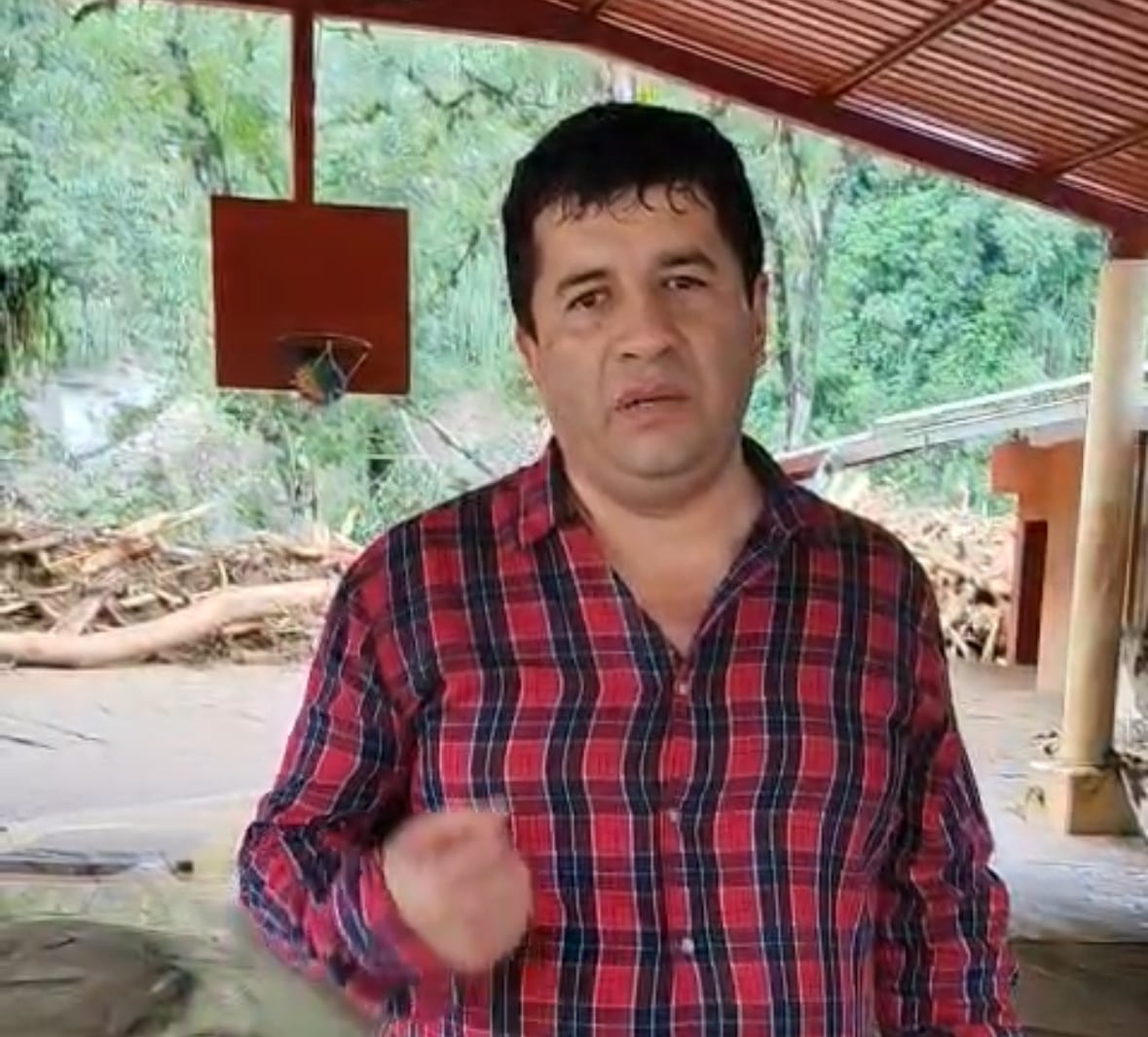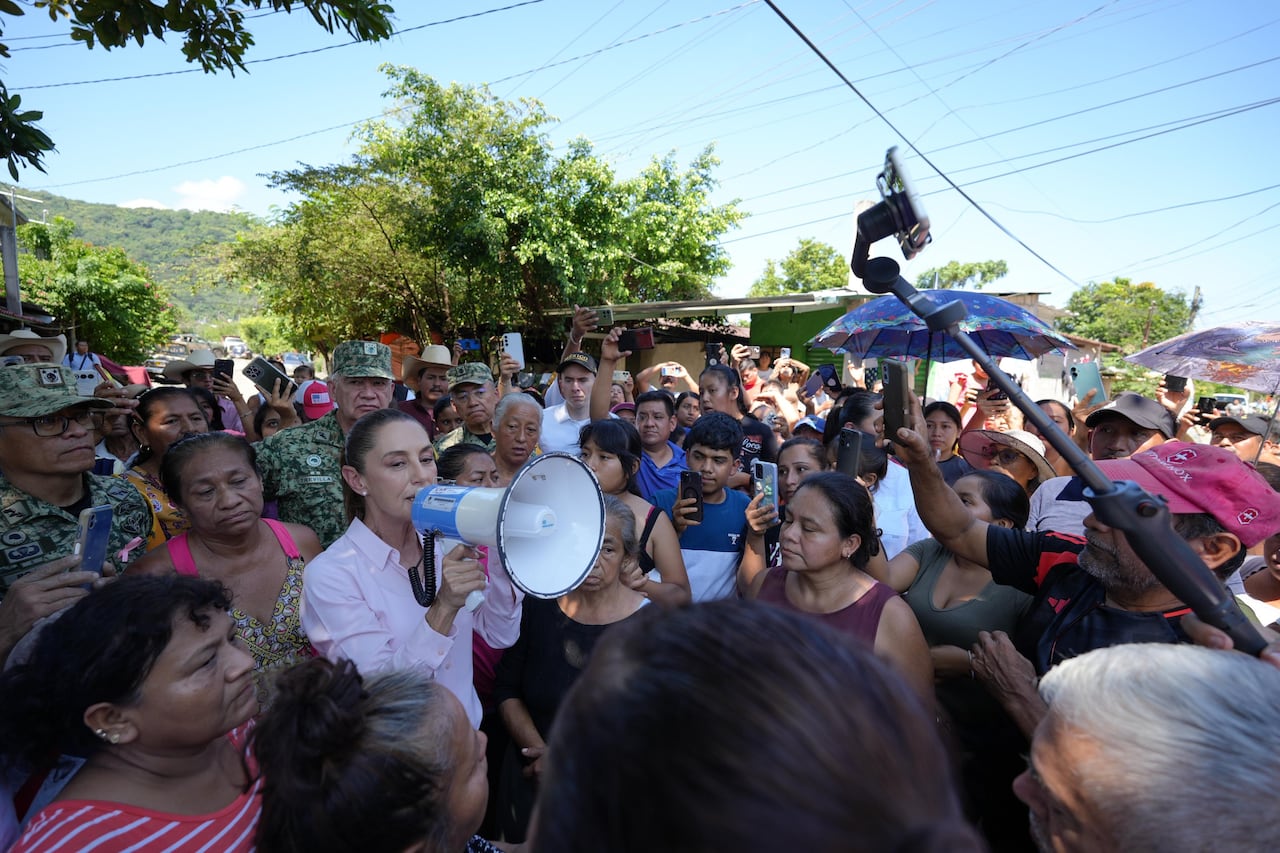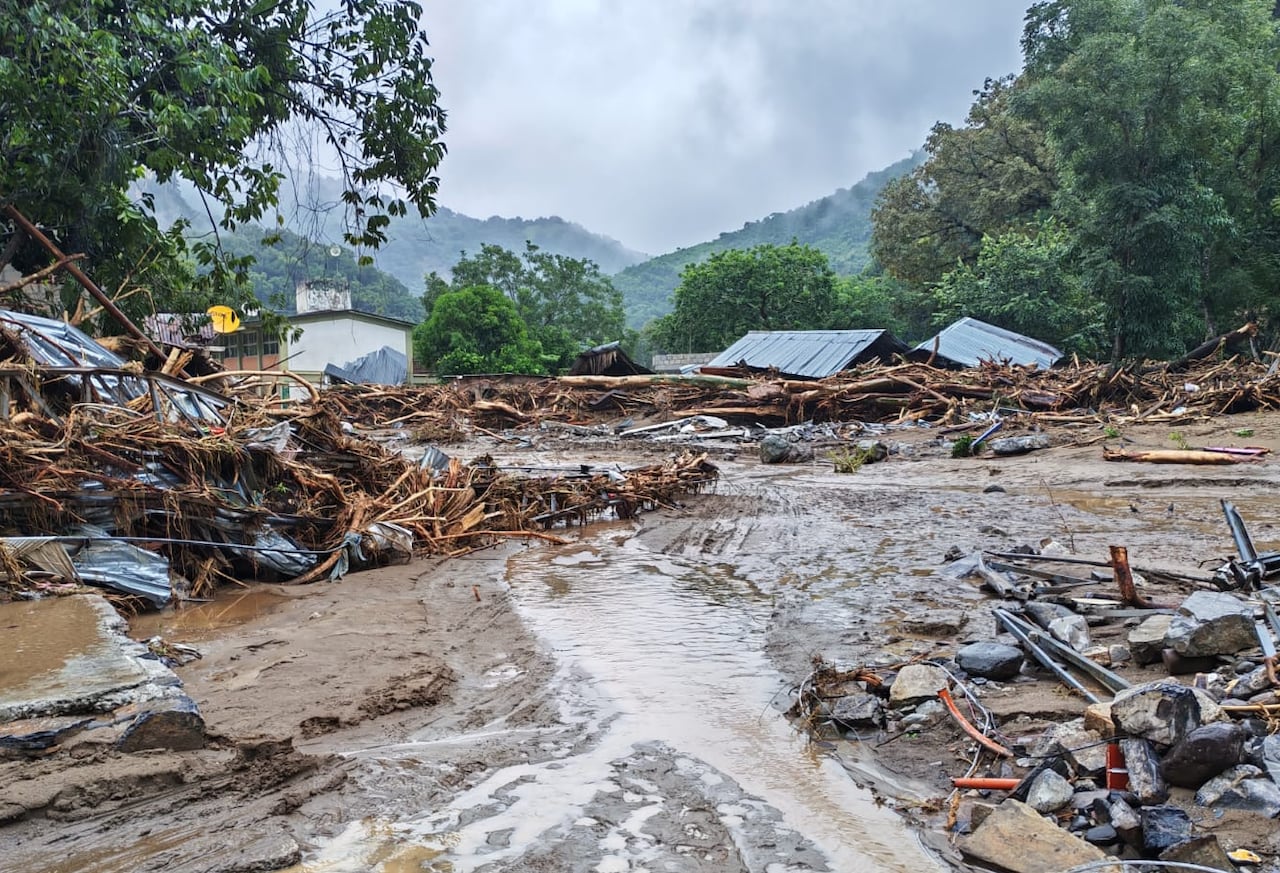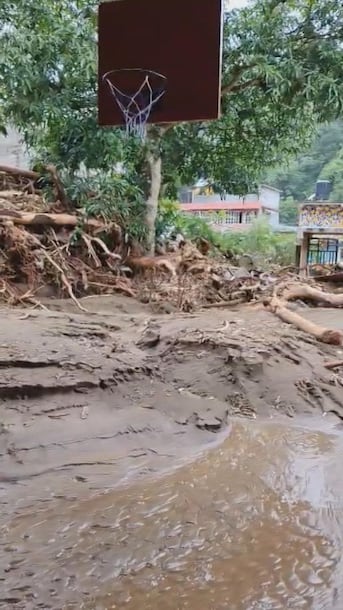Miguel Angel Villegas Escobar says more than a dozen people have been killed in his region, which remains cut off from the rest of the Mexican state of Hidalgo, after torrential rains, overflowing rivers and mud washed out the area’s bridges and roads.
Villegas Escobar, regional director of primary education in the village of Chahuaco, in the landlocked state of Hidalgo, said over WhatsApp voice messages that whole families in the region had been swept away by widespread flooding caused by rains that fell over four days last week across five Gulf Coast and central states.
He said he knows 15 people in the municipality of Tianguistengo — which includes several villages like Chahuaco — who’ve been killed in the flooding and buried by mud.
There are still two people missing from the neighbouring village of Tlacolula, which is also part of Tianguistengo and had been hit the hardest, Villegas Escobar said. The majority of the village’s houses have been wiped out, he said in voice messages from Chahuaco, which sits about 250 kilometres northeast of Mexico City.
Villegas Escobar said people in Chahuaco have taken old trails, packing supplies on pack animals and horses to bring aid to the residents of Tlacolula. “We have gone there to help,” he said.
 Miguel Angel Villegas Escobar is regional director of primary education in the village of Chahuaco, in the landlocked Mexican state of Hidalgo. (Submitted by Miguel Angel Villegas Escobar)Dozens dead, thousands of homes damaged
Miguel Angel Villegas Escobar is regional director of primary education in the village of Chahuaco, in the landlocked Mexican state of Hidalgo. (Submitted by Miguel Angel Villegas Escobar)Dozens dead, thousands of homes damaged
The storms left 64 people dead and 65 missing, according to data released by Mexican authorities at a press conference on Monday.
Heavy rain fell between Oct. 6 and Oct. 9, causing rivers, gullies and ditches to overflow, knocking out power, triggering landslides and washing out highways and roads across the states of Veracruz, Hidalgo, Puebla, Querétaro and San Luis Potosi.
“The federal government, the state and municipal governments, have been present helping the affected populations,” said Laura Velázquez, national co-ordinator for the federal civil protection agency, who released the figures during the press conference.
🔴 El río Chiquito cambió su cauce en Chapultepec de Huauchinango, Puebla.
El agua arrastró una casa, un árbol y basura, provocando nuevos desbordamientos.pic.twitter.com/Fa47ucIO72
The states of Veracruz, Hidalgo and Puebla faced the brunt of the devastation, accounting for 56 people dead and more than 100 communities impacted, according to government figures.
Images circulating over social media and local news reports showed streets turned to rivers of water and mud, people crowding on the roofs of homes and roads washed out by landslides. There was a report in the local media that at least one police officer drowned while attempting a rescue.
The administration of Mexican President Claudia Sheinbaum and the governors of the three main impacted states, who are all part of the governing National Regeneration Movement party (Morena), have faced criticism from opposition politicians and the public over what’s seen as a slow response and failure to issue alerts or preventive evacuations, according to local media reports.
On Monday morning, a group of residents held a quiet protest by the National Palace in Mexico City’s historic centre, holding signs asking the president to help the people of Texcatepec, Veracruz, according to a report in CMX Noticias.
Sheinbaum told the press conference that the government’s preliminary figures showed that more than 100,000 homes had been damaged or destroyed by the rains.
She said that an airbridge, with helicopters, was now aiding about 60 communities in Veracruz, Hidalgo and Puebla that had been left stranded due to road and highway washouts. Some of these communities have small populations of about 1,000 people, Sheinbaum said.
“First we are opening federal highways … then we entered into state [highways],” she said. “From the beginning, we determined this to be the most urgent to get to these locations.”
 Mexican President Claudia Sheinbaum, centre left, speaks to residents using a megaphone during a visit to La Ceiba, Puebla, on Sunday, while surveying devastation left by days of rain last week. (X @Claudiashein)
Mexican President Claudia Sheinbaum, centre left, speaks to residents using a megaphone during a visit to La Ceiba, Puebla, on Sunday, while surveying devastation left by days of rain last week. (X @Claudiashein)
Sheinbaum said she felt the frustration from residents reeling from the devastation caused by the heavy rains.
The president faced questions over a video that surfaced on Sunday showing frustrated citizens in Poza Rica, Veracruz, confronting her while she toured the devastation, claiming that several university students were missing.
“I got down, personally from the vehicle, to listen to the people, and they told us they needed more help, more equipment … and support for the families,” Sheinbaum said during the press conference.
“I explained to them that more help was coming, … that no family would be left helpless.”
Authorities were watching Pacific coast systems
The strength of the rains appeared to take authorities by surprise.
Raymundo Pedro Morales Ángeles, the secretary of the navy, said authorities early last week were monitoring a potential tropical cyclone called Raymond and a hurricane called Priscilla that were developing off the country’s Pacific coast.
But at the same time, a low-pressure system, which formed in the Gulf of Mexico off the coast of Veracruz on Oct. 8, ended up colliding with a cold front coming down from Texas and caused the sudden burst of rains, Morales Ángeles said.
 The village of Tlacolula, which is also part of Tianguistengo, has been hit hard by flooding. (Submitted by Miguel Angel Villegas Escobar)
The village of Tlacolula, which is also part of Tianguistengo, has been hit hard by flooding. (Submitted by Miguel Angel Villegas Escobar)
The region’s rainy season was at its end, the rivers and water tables were at their limit and the hillsides were already weakened by previous rains, creating the conditions for massive flooding, Morales Ángeles said.
“There was no scientific condition, meteorologically, that could have told us that the rains would be of this magnitude,” Sheinbaum said.
The municipality of Tianguistengo was listed by the Mexican government as a priority area.
Villegas Escobar said the military had made contact with the region with two helicopters and that it was beginning the work of rebuilding roads and bridges.
WATCH | School in the Mexican village of Tlacolula destroyed by rains :
A plea for help amid flooding destruction
Miguel Angel Villegas Escobar, regional director of primary education in the village of Chahuaco, describes the destruction to the school in the village of Tlacolula.
In a video shared with CBC News, Villegas Escobar called on Hidalgo Gov. Julio Ramón Menchaca Salazar, local deputies and senators to come to the aid of Tlacolula.
In the video, he shows the village’s primary school, which is now a mangled wreck of mud, brick and tree trunks, in a scene reminiscent of the aftermath of a tsunami.
“The people need a lot of help here in Tlacolula,” he said.

